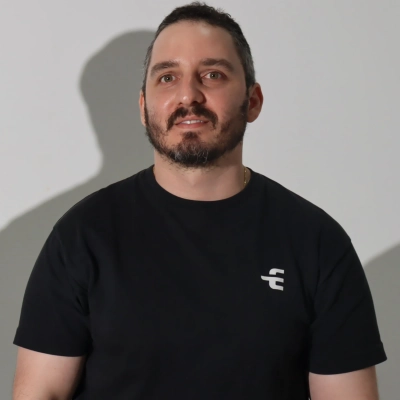How to Promote Content Without Selling Out: 15 Non-Salesy Tips
Content promotion doesn't have to feel like a sales pitch, as industry experts reveal in these fifteen practical approaches. This comprehensive guide offers strategies for sharing valuable information while building genuine audience relationships. Each technique focuses on addressing real audience needs through education, transparency, and problem-solving rather than aggressive marketing tactics.
Educate First, Trust Follows
Our goal with the blog has never been to 'sell', it's to educate so people can make an informed decision. When someone understands coverage, costs, and the actual steps to buy, they don't feel pushed; their doubts are answered and trust follows.
One tactic that strikes the balance is 'answer the next question on the page.' We take posts with high impressions and low CTR and add micro-FAQs in plain language (price, what's covered, what happens after purchase), short explainer videos/images to cut cognitive load, and contextual internal links to the next logical step (e.g., a curated quote flow). It reads like help, not hype.
This works because it's useful first and commercial second. We measure success by CTR lift, click-through to quote start, and content-sourced CAC. When those improve, and they do, we know we've earned engagement by being credible experts, not sales people.

Share Behind-the-Scenes Stories
One of my go-to ways to promote content without sounding salesy is by mixing behind-the-scenes stories with a bit of fun from daily corporate life. People connect more with people, not polished brands, so I like showing the real moments behind the work.
Sometimes it's a glimpse into how one of our team members tackled a tricky project; other times, it's a lighthearted "this definitely happened in the office today" kind of story. It's human, relatable, and a little messy like real creative work.
Sharing these snippets of the process gives your audience a peek into your world. It shows personality, builds trust, and makes your brand feel approachable. You're still promoting your work, but it feels more like storytelling than selling.

Offer Value-First Content Extensions
It's simple; whatever your content teaches, echo it in the CTA by pointing to more of that, not a sales conversation.
So, for example, in our blog post on homepage design tips, we decided to switch things up. Instead of our usual "hire us" CTA's, we said something around; Here's a checklist version of these tips our team at Social Sellinator uses internally, grab it here.
That post got 4x more downloads than any we'd published before, and people who grabbed the checklist still reached out for a couple of our services.
This totally transformed our content strategy; we stopped pushing people forward, we pulled them in with more of what they already wanted by providing more value.

Write for People Already Bought In
The best way to promote content without sounding salesy is to stop trying to promote it. Instead, make your audience feel like they've stumbled onto something that wasn't meant to sell them at all.
One tactic I use: write for people who already bought in. When you create a post or video as if your audience already believes in what you do, you naturally cut out the pitch. You're not trying to convince anymore — you're deepening the conversation. That shift changes the tone completely. You go from "Let me tell you why this is great" to "Here's something interesting we noticed while doing this." It feels insider, authentic, and people lean in because it's not fighting for their attention.
Ironically, that's what drives the most engagement. When people don't feel like they're being sold to, they relax — and that's when they actually start listening.

Lead with Insights, Not Pitches
My go-to move is leading with value instead of a pitch. I'll take one sharp insight from the content—like a surprising stat or a quick tip—and share it as a standalone nugget on LinkedIn or in a newsletter. Then I'll casually drop a link at the end with a line like, "If you want the full breakdown, here's the deep dive." It feels more like sharing something useful with a friend than shoving a product in their face. The funny part is, the less you push, the more people click—because they're curious, not cornered.

Turn Client Frustrations into Helpful Guides
We promote our content by focusing on education first, not ego. One tactic I swear by is turning common client frustrations into free, bite-sized guides like 'Why Your Ads Aren't Working' and then distributing them through niche Facebook Groups and Reddit threads where lawyers are already venting. It strikes the perfect balance between being helpful and being remembered. No hard sell, just 'here's something useful, use it or don't.' The funny thing is, the less we push, the more they ask for our help.

Demonstrate Technical Choices Through Real Examples
I demonstrate project lessons through real examples which show successful and unsuccessful approaches together with their underlying reasons. I concentrate on explaining the reasoning behind our technical choices instead of promoting the service. The team learned about Dapper's performance benefits through our analysis of how it replaced Entity Framework in their high-load reporting service. Engineers understand better through concrete examples instead of generic marketing language.
The method creates natural involvement from participants. Our goal is to demonstrate our problem-solving approach because it helps both technical staff and business stakeholders develop trust in our organization.

Let Purpose Drive Your Message
We let purpose lead promotion. Instead of focusing only on results, they tell the story of responsibility and care. They show how nature gives and how we return that care. This approach resonates with people who value authenticity and meaning. They do not just want to buy a product, they want to connect with a belief that aligns with their values. When content reflects genuine intention, it creates a sense of admiration that goes beyond simple marketing.
Engagement grows naturally when empathy guides communication. They feel more connected when a brand shares its purpose and respects the world around them. It is not about pressuring people to act quickly, it is about inspiring them to participate in a shared responsibility. By showing their commitment to sustainable beauty, they build lasting relationships and meaningful loyalty with their audience.

Share Honest Developer Lessons and Challenges
In developer marketing, the best content doesn't feel like marketing at all. Developers are quick to skip anything that sounds like it's trying to sell them something, but they'll absolutely engage with content that teaches, sparks curiosity, or reflects a real experience from someone who's been in their shoes.
One thing that's worked really well for us is turning our team's day-to-day lessons into stories worth sharing. Instead of announcing "we launched X," we talk about what we learned while building it: the problems we hit, the trade-offs we made, and how we'd approach it differently next time. That kind of honesty builds credibility, and it invites conversation rather than closing it off.
It also helps to think about where your content belongs. A technical deep dive might perform better on GitHub or Reddit than your blog. A personal reflection might resonate more on LinkedIn. Matching the content to the community keeps it from feeling out of place and that authenticity is what makes people want to engage.

Balance Educational Content with Minimal Promotion
The single best strategy that's worked for me is carefully curating the right content balance through my personal LinkedIn page. I keep a simple content ratio: around 40% educational, 40% inspiring or entertaining, and no more than 20% promotional. No lead magnets. No gatekeeping. Everything's free and open.
This builds long-term trust and attracts the right kind of inbound leads. I've found that when you show up consistently with genuine value (not just selling), people begin to trust your expertise and value your transparency.
When they're ready to solve the problem you talk about, you're already top of mind.
Basically, "selling" your expertise first helps you sell anything related to it: consulting, services, or in my case - the software I'm building.
Ask Questions That Create Meaningful Conversations
My approach involves PROMOTING CONTENT THROUGH AUTHENTIC QUESTIONS that invite discussion rather than directive announcements telling people to read our material. I ask questions like - "What is your local SEO 'problem'? We just released a guide outlining the seven questions I get asked by clients the most," which is a subtle way of having someone engage with us, thereby stealthily peppering our content.
This 'questioning' approach also works well because it creates two way communications where prospects are invited to share their own stories and experiences before they saw any content.and demonstrates an investment in them finding solutions within the material. It's engagement born of conversation - a community in which content naturally becomes promotional (as an asset, not just as marketing).
The RIGHT BALANCE comes from valuing conversation more than content consumption. Even if people engage with the questions without reading through to the linked material, we deliver value thanks to the social discussions and keep our knowledge bubbling up. I has gotten 3x better engagement from straight content promotion when targeting works, as people seem to like being invited in to the conversation instead of just told to look at our stuff.

Use Objections to Create Targeted Content
We actively use customer feedback to refine our positioning and eliminate friction in our sales process, treating every stated objection as a data point for improvement. Specifically, when we noticed a recurring sales objection about a competitor's perceived "all-in-one" feature set, we immediately commissioned a highly detailed comparative content piece that directly addressed that feature parity gap, resulting in a fifty percent drop in that specific objection during follow-up sales calls.
Focus on Problems Before Solutions
Product-pitching is the worst way. Problem-focused messaging is far more relevant and engaging -- and earns the right to mention a solution or explore further.
I teach a method I call the POSE Value Story. Mention a Problem (P) that most of your ICP or target audience wrestles with (that you solve). Share some Outcomes (O) that you've helped your customers achieve. Briefly mention the Solution (S) that solved and problem and enabled the outcomes (not a pitch, not a presentation -- a simple mention). Then ask if that makes sense to Explore (E) further. When speaking, you can check relevance after both P and O. If writing, you can ask rhetorically. For explore, if writing, use if as your CTA to reach out or download supporting collateral.
For added value, if you're familiar with Aristotle's influence rhetoric of Ethos (establish credibility), Pathos (make an emotional appeal), and Logos (justify with logic), you can build it into the value story, by describing the concern, stress, and frustrating emotions in the Problem and the relief and sense of accomplishment when the Outcomes were achieved. The entire story and any metrics use you throughout support credibility.
POSE Value Stories are highly effective.

Hook Viewers with Relatable Problems First
When it comes to video content or ads, you must present yourself as a brand in a tone your audience is comfortable with. No point going in with heavy-handed jargon if you're doing a video that's being served on a platform that they use to watch dogs doing stupid stuff or older people falling over.
You need to kick things off strong. Go in on the problem. Get that hook in. Get people invested in what you're solving for them in a way that's relatable to them. You want to ensure that the first 4 seconds blast them with a sentence where they feel SEEN. The main thing is to keep products out of it at this point and roll with vibes.
If you go too hard with logos, products, and all that jazz, it's an instant flick. Nobody wants to be sold to. However, if you throw them something where they understand the problem and resonate with it, they will stick around. The same goes for platforms like LinkedIn. Tonally, you might want to change things up a bit, but the formulation remains just as important.
After that, you can roll into what you're all about as a brand and what your product or service does, but if you want to beat that 1-second engagement roll-off, this is the sort of stuff you need to consider.

Make Content About Them, Not You
People viewing your content want to immediately know "what's in it for me?" Always lead with value. You're not trying to convince someone to do you a favor and buy what you sell. You're helping them realize how much better their lives could be by educating them about the solution you have to offer. Consider the impact your solution has on their problems and make your content about them, not about you or your company.
To drive engagement, just ask them about themselves. Comments drive reach on social platforms. Encourage your audience to engage with your content by asking them a question and tell them to share their thoughts in the comments. People will like your brand more if they feel like you care about them.
Consider how you'd behave in a one-on-one conversation. You wouldn't talk at the other person the entire time. You'd ask them questions and make them feel heard. Publishing digital content can be hard because it can sometimes feel like you're posting into a black hole. But, remember, there are real people on the other side of the screen. Just treat them like it.




